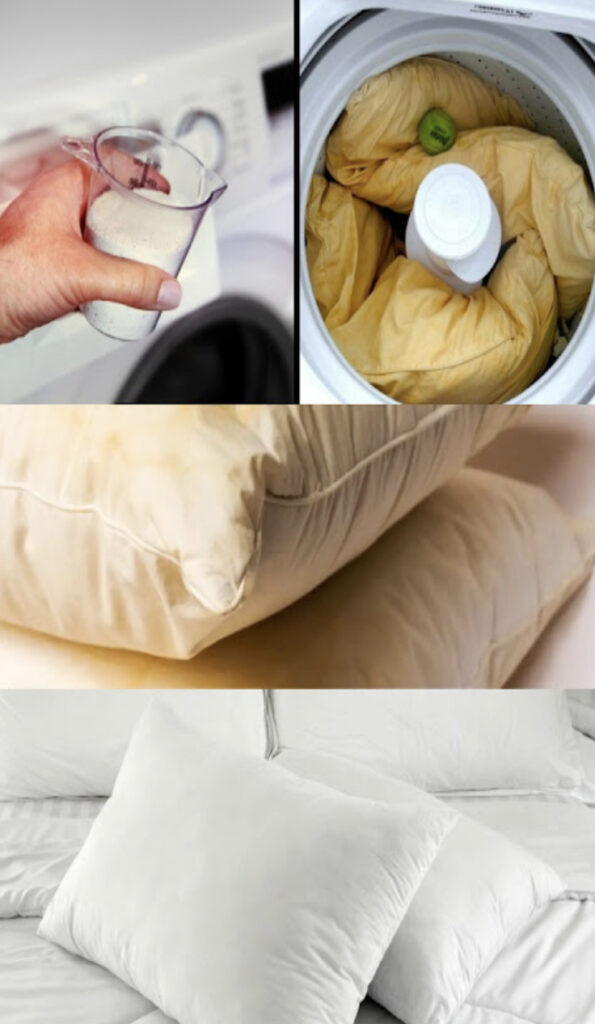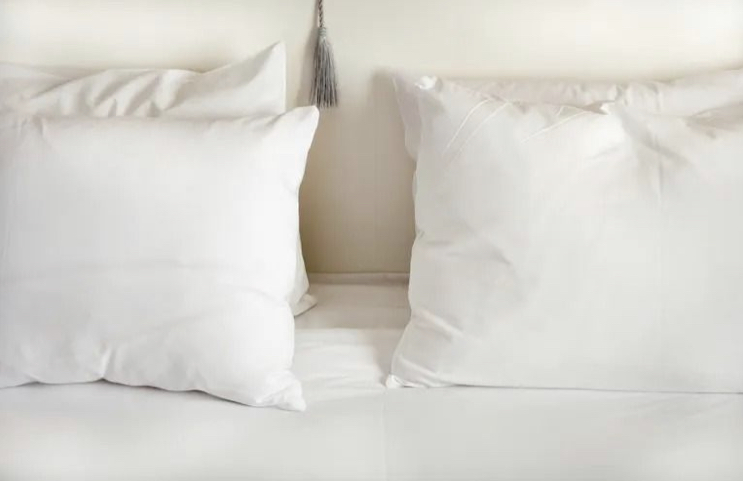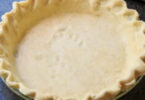
Those yellow spots on the pillows may be disgusting, but they are not permanent.
Although we know that the human body – including our own – can sometimes be disgusting, we prefer not to remember it. So when you change your sheets and find that your once perfectly white pillows are now covered in a web of yellow and brown stains, it can be unsettling.
But these discoloured pillows look worse than they really are. There is a reasonable explanation for the origin of these stains, and they can be removed. Here’s what you need to know.
Why do pillows turn yellow?
There are several reasons why pillows turn yellow, but the most common cause of these spots is sweat. People sweat while they sleep, some more than others. The more you sweat, the more moisture seeps into the pillowcase and onto the pillow, causing the stains. And when you think about how many hours your head and face are on that pillow, that’s a lot.
In addition to sweat, your hair can be the culprit: specifically, if it’s particularly oily or if you often go to bed with wet or damp hair. Certain types of make-up and skin care products can also be the cause of these yellow spots. It can also be drool. Putting a waterproof pillow protector before your pillowcase can help prevent much of the discoloration.

How to wash pillows in the washing machine
Make sure your washing machine is large enough.
If your washer is big enough, you can wash small pillows in it. But if you have queen or king-sized pillows, head to the laundromat to use their extra-large front-loading washers. “What cleans is not the water, but the tumbling motion of the items inside the washer,” Roberts says. “If you put pillows in the washer, they get wet but they don’t get turned over.”
Use the gentle cycle.
Too much agitation may break apart the fill.
Use cold or warm water.
Avoid hot water, which can break down the filament in your pillows.
Don’t use too much detergent—and skip the softener.
Reduce the amount of laundry detergent you usually use; say, ¼ capful if you use one full cap during regular loads (too much is harder to rinse out). Don’t use fabric softener, which can collect on pillows and cause a sheen that attracts more dirt and oils.
Rinse well.
If possible, choose a second or deep rinse option to completely flush out any residues.
Now time to dry.
Place the pillows in the dryer on low heat. Add a couple of dryer balls or clean tennis balls to prevent the filling from clumping. Down may take longer to dry, which is normal, says Roberts. A dryer sheet is fine to use to reduce static. And triple-check to ensure pillows are totally dry (so they don’t get mildew!) before making the bed.
More Pillow Tips
Clean pillows by hand if you can’t use a washing machine.
If your pillow’s label can’t be found, you can always wash it the old-fashioned way too. Wait for a sunny day, and take the pillows outside to beat them with a clean broom handle (or rug paddle if you have one like your great-grandmother’s!). Then let them air out outdoors for a few hours. For foam pillows, you can pull out your vacuum and use the upholstery attachment brush instead.
Use pillow protectors.
Cover pillows with pillow protectors before you put on pillowcases. Then wash these every week when you wash your sheets.
Fluff daily.
In between washes, fluff up your pillows when you make the bed each day. This helps keep them plumped and redistributes the filling to restore their shape, says Roberts.
Keep extra pillows on hand.
If you find a pillow you love, buy a few extra, suggests Roberts. That way, when your favorite doesn’t support your head and neck like it used to, you can replace it with the same type. Plus, it’s always nice to have extra pillows handy for overnight guests.
Know when to say goodbye to your pillow.
If your pillow is lumpy and flat, it’s probably time to part ways. Ditto if the pillowcase itself is stained and yellowed. Old pillows also can accumulate allergens such as dust mites and pet dander, so go ahead and treat yourself to a new pillow every year or so (or as needed).





